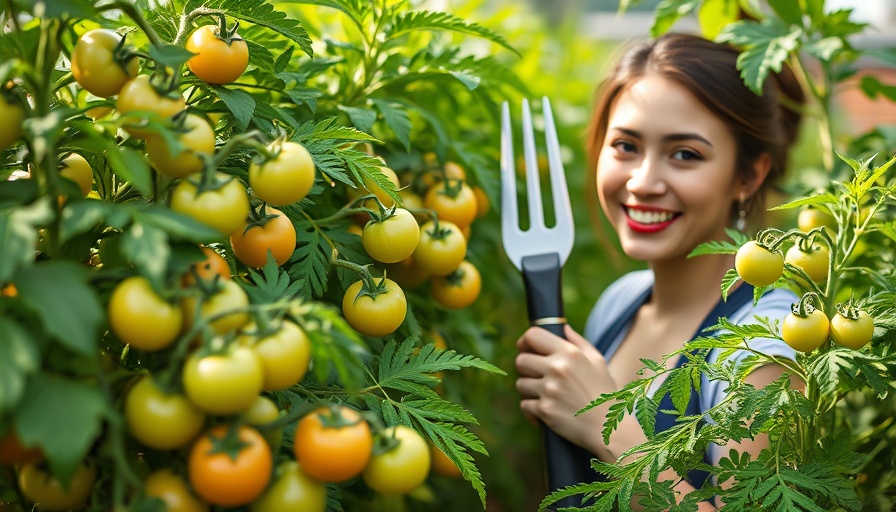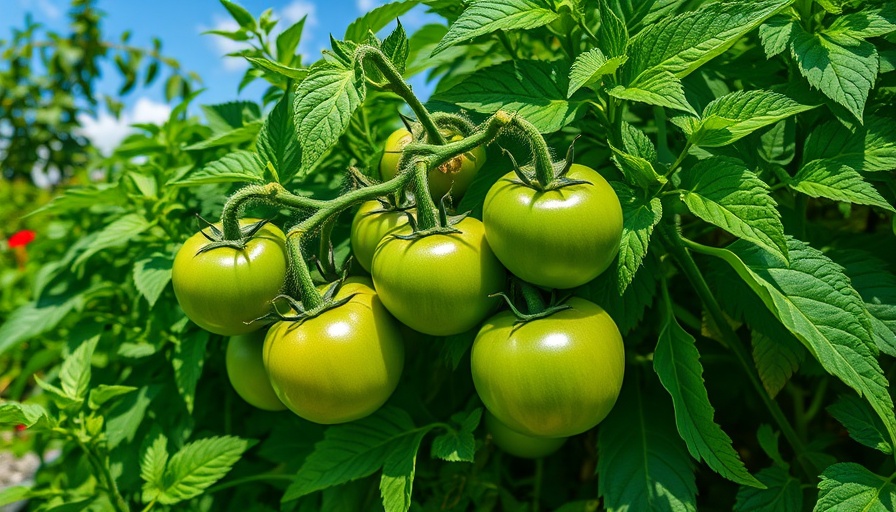
The Science of Growing Tomatoes: Unveiling Techniques
For Okanagan gardeners, the quest for the perfect tomato is often regarded almost like a rite of passage. Yet, even the most dedicated among us may find themselves knee-deep in soil and still uncertain about getting it right. In a recent exploration of effective tomato cultivation methods, some science-backed hacks shone a light on missteps commonly made by amateur gardeners. Forgetting to incorporate temperature management, nutrient timing, and environmental considerations can lead to less than stellar harvests. So, let’s delve into these innovative techniques that can boost your tomato game!
In '5 Science-Backed Tomato Growing Hacks (You’re Probably Ignoring)' the video reveals key insights into effective tomato cultivation, prompting this deeper analysis.
Understanding Temperature Differentials
The first gem of wisdom is about managing temperature differentials effectively, especially during the day and night. Tuning the nighttime temperatures to be equal to or warmer than those of the daytime can create stockier tomato plants that are less prone to damage from environmental factors. By achieving this positive temperature differential, you inspire a shorter, sturdier stem growth, akin to how a thick straw functions better than a skinny one at carrying liquid. For Okanagan gardeners, this means positioning your plants wisely and timing the transplanting right to take advantage of native climate conditions. If cooler nighttime temperatures persist, waiting until at least June could be pivotal for your tomato seedlings to thrive.
Finding the Ideal Root Temperature
Next up is ensuring your tomato plants enjoy optimal root temperatures. Ideally, tomato roots flourish at around 20°C (68°F). However, soil temperature can greatly vary based on factors such as sun exposure, soil type, and depth of planting. Understanding these dynamics means checking temperatures at different soil depths with a soil thermometer before planting. Gardeners should experiment to uncover the perfect planting depth for their specific situations—this might involve planting at soil surface level in cooler shaded areas while burying them deeper in warmer, sunnier spots.
Nutrient Timing is Essential
It’s not just about what nutrients you give your plants, but when you give them. The growth cycle of tomatoes necessitates different nutrient compositions at various stages. For seedlings, phosphorus is crucial as it promotes robust root development. During the vegetative phase, nitrogen is essential, while potassium should dominate during flowering and fruit-setting. This strategic application of nutrients ensures that tomatoes grow efficiently through their life stages and yield high-quality produce.
The Myth of One-Size-Fits-All Planting
A common misconception is that all tomato varieties can be planted at the same depth or treated uniformly. Each variety has unique needs based on environmental conditions and local soil characteristics. For instance, in cooler climates, like parts of the Okanagan, gardeners might find certain varieties struggle without customized care. A great practice is to research specific tomato types and seek guidance to recognize what variations could better suit your garden.
Managing Extreme Temperatures
As temperatures rise, Okanagan gardeners may notice a decrease in fruit development due to heat stress. Pollen begins to die, resulting in flower drop, which can be incredibly disheartening for gardeners who work hard to nurture their plants. Remaining diligent about watering, using mulch to cool soil, and providing necessary shading can mitigate these stresses. Recognizing the temperature boundaries within which your plants thrive can make a substantial difference in your tomato harvest.
Utilizing Plant Sugar Output
Finally, let’s talk about the fascinating role of sugars emitted by tomatoes. These sugars can serve as a natural defense against pests like aphids and whiteflies. By selecting varieties that produce higher sugar content or inducing certain stressors that encourage sugar production in your plants, you can boost their resistance to pests. Also, ensuring ample sunlight exposure helps create these beneficial sugars. The connection between healthy plants and enhanced flavor is directly tied to the quality of cultivation practices.
Conclusion: Harnessing Science for Better Gardening
If you’re an Okanagan gardener looking to elevate your tomato growing experience, consider turning to science-backed methods and practices. By implementing temperature management techniques, understanding nutrient timing, and acknowledging the importance of depth and variety, you can dramatically increase your chances of a bountiful harvest. So, the next time you’re tempted to follow archaic gardening advice, pause and evaluate the science. With these fresh insights, your tomatoes can turn into the flavorful delights you’ve always dreamed of come harvest season.
 Add Row
Add Row  Add
Add 




Write A Comment